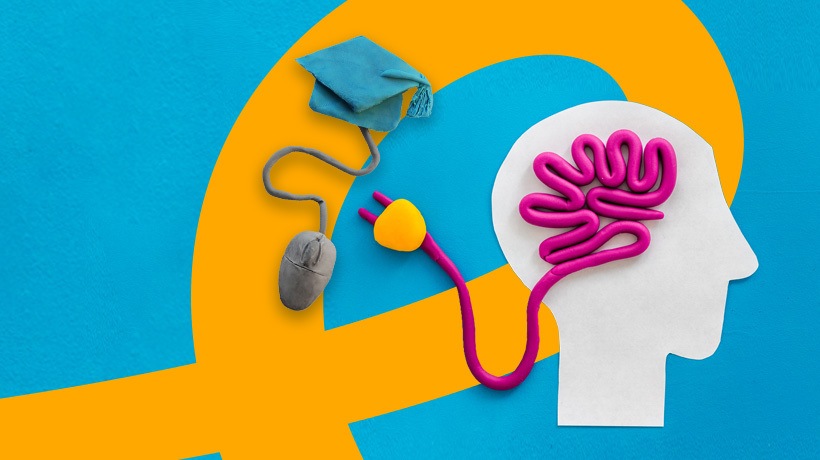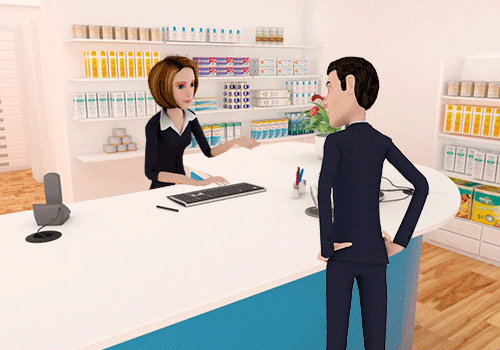Tips To Develop Serious Games In Online Training
Producing a high-quality serious game ranks right up there with flying a plane and performing brain surgery for many eLearning professionals. Countless organizations rely on serious games to impart product knowledge and motivate distracted employees. Your sales representatives have the ability to brush up on product specs by engaging in branching scenarios, online training simulations, and interactive presentations that feature game mechanics. However, it seems completely implausible that someone with no prior game design experience would be able to create a complex, interactive, and immersive gaming environment, right? Fortunately, there are tools, tips, and tricks that can help you integrate serious games for your online learners. So, get ready to add "top-notch game designer" to your list of eLearning credentials. Here are 7 tips to help you develop serious games to add to your product knowledge online training strategy.
9 Insider Tips For Serious Game Development
1. Goal Setting Comes First
It's easy to get caught up in the aesthetic aspects of your game, or even the storytelling and eLearning character creation. However, before you dive into all of the more fun and exciting aspects of serious game design, you have to figure out WHY you're designing it in the first place. In other words, what are your goals and objectives? What do you need your online learners to know and how are you going to convey the information? Are there any performance gaps that you need to fill? Are your online learners lacking key skills? Is there a problem with their task proficiency? Answering these questions helps you identify the primary purpose of your serious game and meet the needs of your audience.
2. Pick The Right eLearning Authoring Tools
An idea is just an idea until you find the right tool for the job. In this case, it's a serious game eLearning authoring tool, or several, that features eLearning interactions, templates, and themes that can simplify the gamification process. Ideally, you should look for an eLearning authoring tool that offers a great asset library and responsive design. Media libraries can include everything from images and cutouts to animations. You can use all of these online resources to create an immersive serious game by simply dragging and dropping the objects into your layout. Responsive design gives you the chance to offer your serious game on virtually any eLearning platform, including mobile phones and tablets. The eLearning platform will adjust every element on the page to fit the screen size and resolution of the device.
3. Keep It Bite-Sized And Mobile-Friendly
Serious games are most effective when they are quick and convenient. Modern learners don't have the time to engage in a half-hour game, even if it does offer them the skills and information they need. However, microlearning online training courses with games that are accessible on any mobile device or LMS are more easily digestible. They can also be repeated time and again to improve learner retention and reduce cognitive overload. They don't have to wait until the next online training session to get the information they need to seal the deal. There is a variety of responsive design tools that adjust the layout of your online training content based on the mobile device or browser that is being used. You can design one master version of your serious game and then offer it on multiple platforms.
4. Focus On eLearning Character And Case Study Development
eLearning characters are the lifeblood of your serious game. They are the fictional people who are going to connect with your online learners on a deeper level. As such, you must develop your eLearning characters as much as possible and give them memorable personalities and traits. In addition, your sales staff must know how each of the features and benefits of the product leads to real-world results. Consequently, you need realistic situations and case studies that employees can use in the workplace. It's all about context, and serious games that are true-to-life offer your employees practical knowledge that helps them boost their sales and improve customer loyalty. Do some research into your target customer base, such as their spending habits and attitudes toward the brand, then develop a variety of different archetypes for your product knowledge serious games.
5. Identify The Ideal Game Mechanics
Game mechanics provide structure for your serious game. They are the rules and guidelines that online learners must follow, as well as the actions that they must undertake. Mechanics may also consist of incentives or rewards, such as badges that unlock new content or leaderboards that fuel their learning motivation. All of these elements should be planned in advance so that you can build your storyline around them.
Another focal point that needs to be balanced with the mechanics of the serious game is the product features, specs, and benefits. The trick is to link every eLearning character, situation, and challenge to the product, itself, and use the game elements as a performance support tool to increase motivation. Bear in mind that your sales team is probably going to be accessing the serious game in their "moment of need", which is when they are actively negotiating the sale. So, give them all of the details they need to pass on to the consumer.
6. Embed Third-Party Resources To Increase Serious Game Interactivity
Some of your sales employees might breeze right through your product knowledge online training, at which time they'll probably want to learn more about the features and benefits. What can you do to increase online learner engagement and immersion, but you don't have the time or resources to develop additional eLearning content? Embedding third-party resources is a great way to enhance the quality of your serious game without having to create everything in-house. Include a link to a helpful tutorial that walks online learners through a task, or embed a YouTube video that explores a topic at length. For example, an employee who wants to learn more about your newest product can watch an online presentation that highlights consumer benefits and some customized sales tips. You can even create printer-friendly eLearning courses by integrating PDF files and other downloadable documents that online learners can access via the serious game.
7. Facilitate sales skills
There is a distinct difference between learning about the products and knowing how to sell them. Your product knowledge online training course might explore all of the features of a product and why a customer should make the purchase, but a serious game gives your employees the tools they need to negotiate every aspect of the transaction. They can reenact some of the most common sales obstacles, such as dealing with difficult customers, and improve their communication skills with the help of online training simulations. Product knowledge isn't enough. You need to walk them through every step of the sales process, from start to finish.
8. When In Doubt… Outsource!
eLearning professionals tend to be self-starters or eLearning freelancers who tackle every challenge that comes their way. We may have every intention of handling all aspects of the serious game design process, but there are times when it's best to outsource. For example, if you simply don't have time to write an eLearning script you can enlist the help of a professional writer. If you are not quite sure what information to include, maybe you should consider bringing in a Subject Matter Expert. Whether you lack adequate game design experience or simply don't have room in your schedule to do the job on your own, you should consider outsourcing at least some of the eLearning content.
9. Design A Learner Prototype
You've mapped out every aspect of your serious game and are ready to create your finished product. But wait, how are you going to iron out all the issues and ensure a great serious gaming experience? The solution is developing a learner prototype, or rough draft, and then conducting user testing. Host focus groups to get online learner feedback and identify areas of improvement. Determine whether your game mechanics are fulfilling their purpose, or if you may need to rework your gamification strategy. Make sure that there aren't any coding glitches that may compromise the quality of your serious game. Now is the time to edit, revise, and analyze every element of your serious game design in order to avoid any issues after launch.
Use these 9 tips to design memorable serious gaming experiences for your online learners, even if you've never created interactive multimedia in the past. Choosing your eLearning authoring tools carefully, integrating the most effective game mechanics, and knowing when it's time to outsource are the secrets to serious game success.
Do you need to add a bit of excitement to your compliance online training courses? Read the article 6 Tips To Gamify Compliance Online Training Courses to learn how you can transform your compliance online training courses into amazing gamification experiences. If you already have training courses and you're thinking of moving them online, read the article 6 Reasons To Create Product Knowledge Online Training Courses to discover why corporate eLearning and product knowledge training go hand-in-hand.








